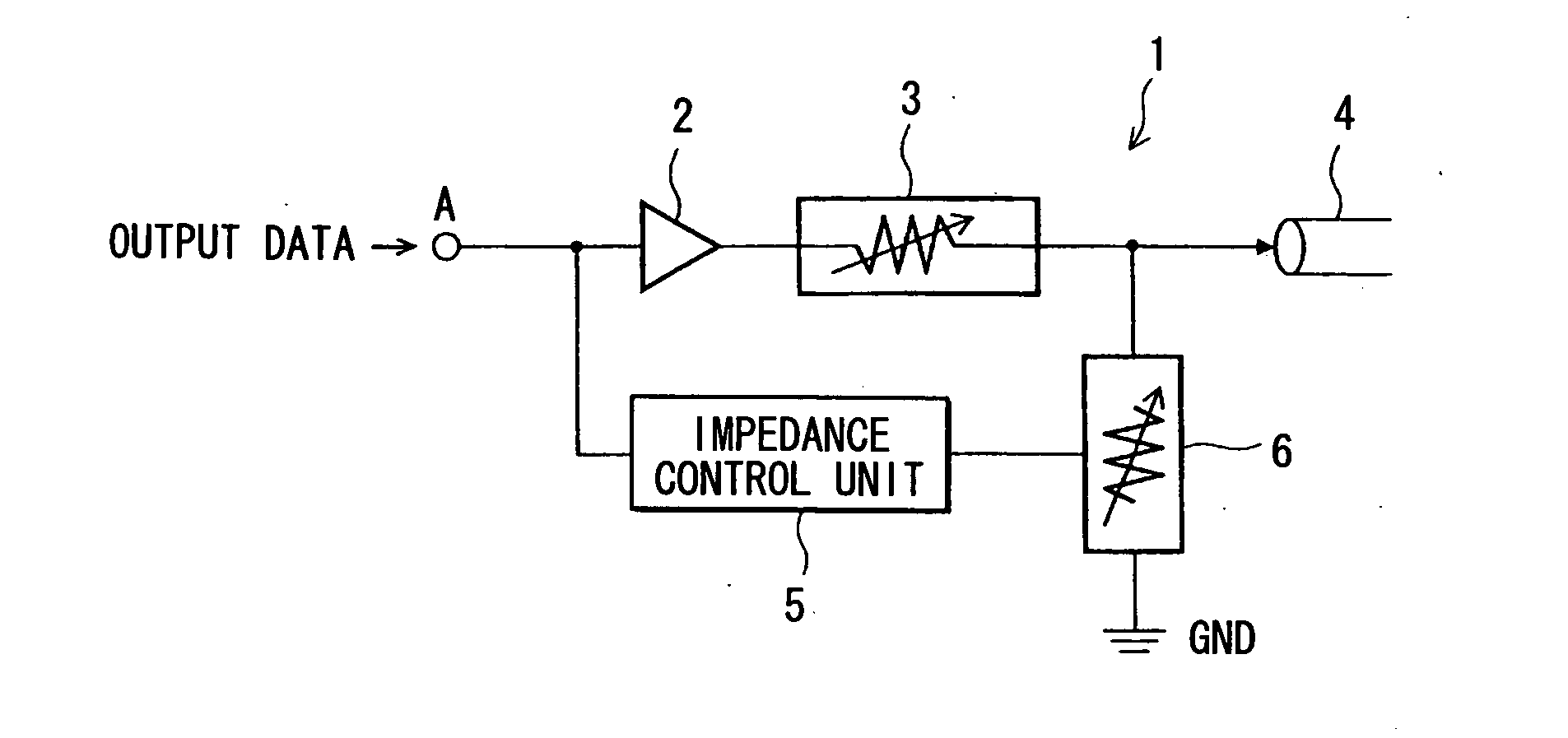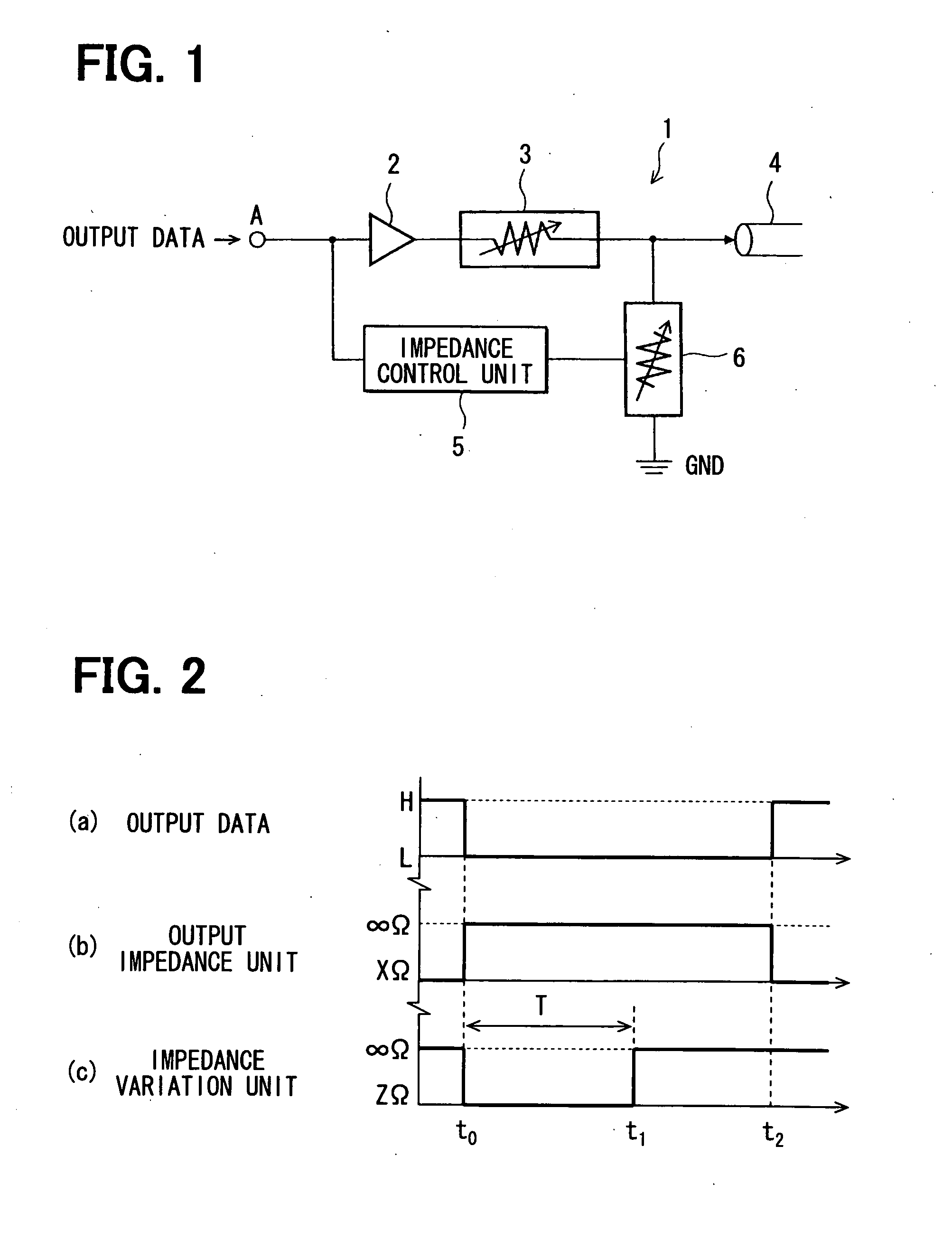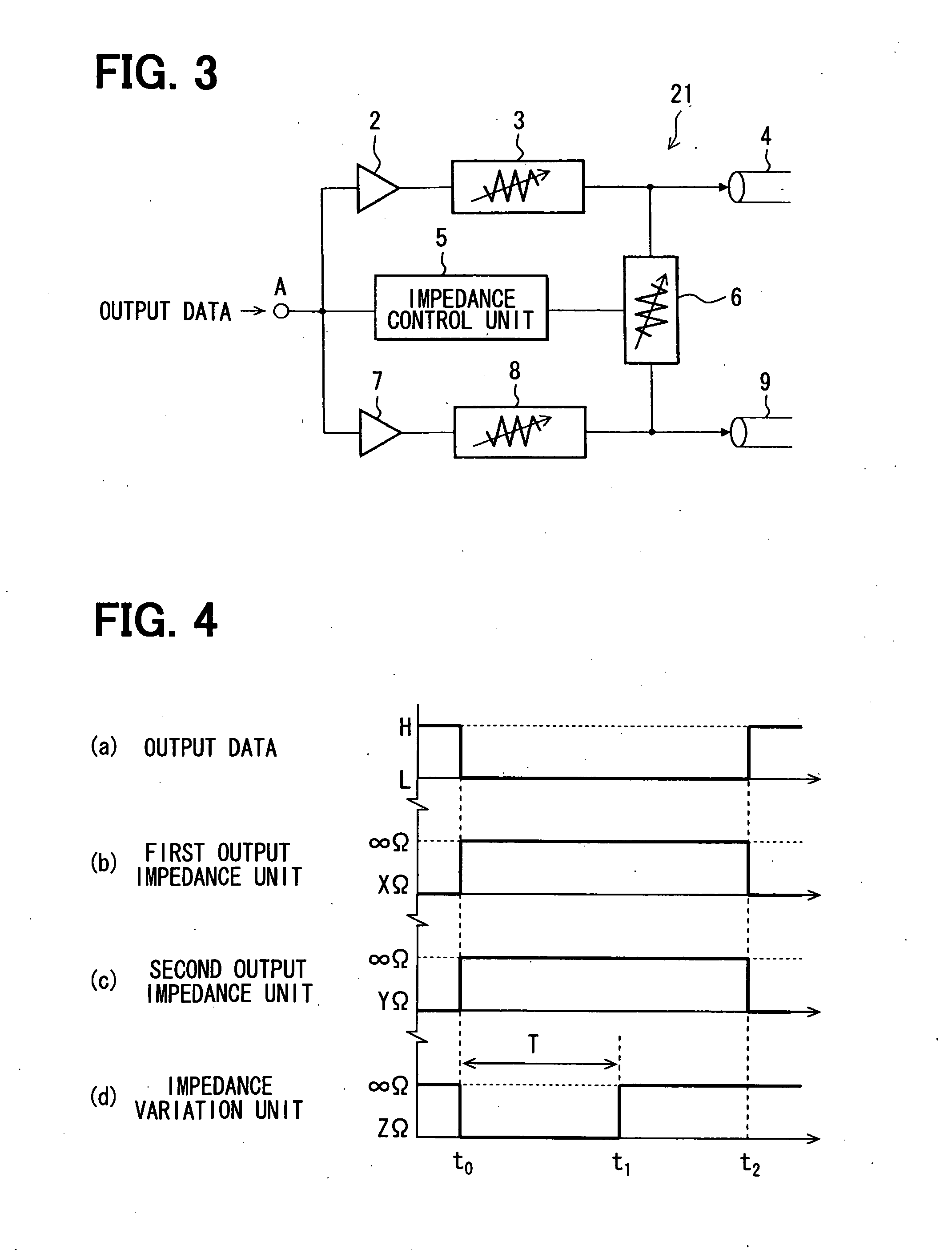Signal transmission circuit
a transmission circuit and signal technology, applied in the field of signal transmission circuits, can solve the problems of waveform distortion increase, the inability to adopt a conventional signal transmission circuit, etc., and achieve the effect of reliable communication, low power consumption, and isolation among elements
- Summary
- Abstract
- Description
- Claims
- Application Information
AI Technical Summary
Benefits of technology
Problems solved by technology
Method used
Image
Examples
first embodiment
[0045]Referring to FIG. 1 and FIG. 2, a first embodiment will be described below.
[0046]FIG. 1 shows a signal transmission circuit 1 of the present embodiment. A digital output signal transmitted as data from a signal output circuit (not shown) is applied to a terminal A. The terminal A is connected to an input terminal of an output buffer circuit 2. An output terminal of the output buffer circuit 2 is connected to a signal line 4 via an output impedance unit 3.
[0047]The output impedance unit 3 can be configured such that when a signal input from the output buffer circuit 2 transitions to a high level H, the output impedance unit 3 will set an impedance for the signal line 4 to a predetermined impedance XΩ. When the signal transitions to a low level L, the output impedance unit 3 will set the impedance for the signal line 4 to a high impedance. For example, the output impedance unit 3 enters the equivalent of an open state, presenting an infinite impedance ∞Ω to the signal line 4.
[00...
second embodiment
[0057]Referring to FIG. 3 to FIG. 6, a second embodiment is described below. A second embodiment differs from a first embodiment in that, for example, a signal transmission circuit 21 includes two signal lines. The difference from a first embodiment will be described below.
[0058]FIG. 3 shows the circuitry of the signal transmission circuit 21. In addition to the output buffer circuit 2 and output impedance unit 3 included in a first embodiment, an output buffer circuit 7 and an output impedance unit 8 that are identical to the output buffer circuit 2 and output impedance unit 3 respectively are included. In addition to the signal line 4, a signal line 9 is included. The impedance control unit 5 and impedance variation unit 6 are included as they are. The impedance variation unit 6 can vary the terminal impedances in the signal lines 4 and 9.
[0059]The output buffer circuit 2 is equivalent to a first output buffer. The output buffer circuit 2 is configured so that when a signal of a h...
third embodiment
[0069]Referring to FIG. 7, a third embodiment is described below. Herein, a signal transmission circuit 31 includes a concrete example of the impedance variation unit 6 that has been described in relation to a second embodiment. In the present embodiment, the signal transmission circuit 31 is provided with an impedance variation unit 61 including a series circuit composed of an npn bipolar transistor 10 and a resistor 11 presenting an impedance. The resistance of the resistor 11 is set to a value equivalent to the differential impedance between the signal lines 4 and 9. A control signal for controlling the ON and OFF states is input from the impedance control unit 5 to the transistor 10. When the transistor 10 is in the ON state, the resistor 11 terminates the signal lines 4 and 9.
[0070]According to a third embodiment, the same operation and advantage as those of a second embodiment can be provided. In addition, the impedance variation unit 61 can be realized with simple components....
PUM
 Login to View More
Login to View More Abstract
Description
Claims
Application Information
 Login to View More
Login to View More - R&D
- Intellectual Property
- Life Sciences
- Materials
- Tech Scout
- Unparalleled Data Quality
- Higher Quality Content
- 60% Fewer Hallucinations
Browse by: Latest US Patents, China's latest patents, Technical Efficacy Thesaurus, Application Domain, Technology Topic, Popular Technical Reports.
© 2025 PatSnap. All rights reserved.Legal|Privacy policy|Modern Slavery Act Transparency Statement|Sitemap|About US| Contact US: help@patsnap.com



